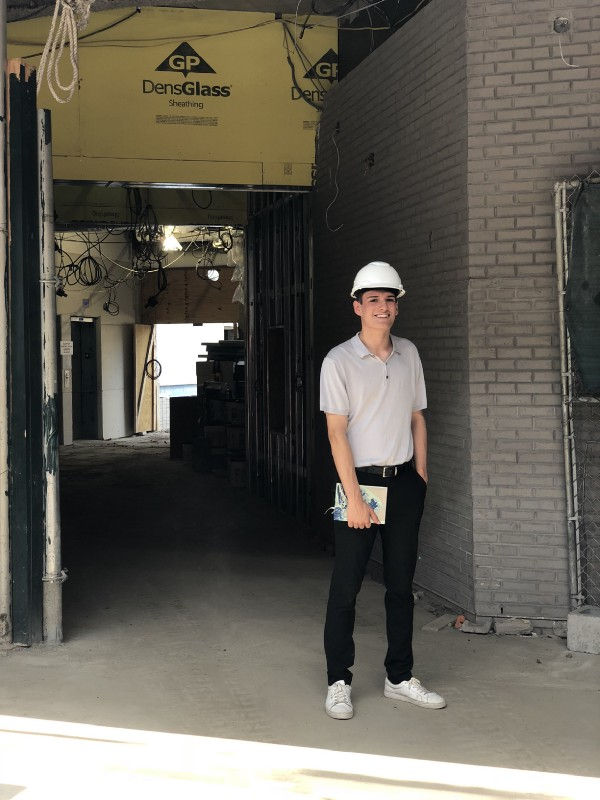How Mobile Oasis Improves Nutrition and Builds Community
- Emilie Davis
.png/v1/fill/w_320,h_320/file.jpg)
- Sep 4, 2015
- 4 min read
By Hannah Gilmore, Washington and Lee University (2016)
Alana Babington and I pored over a map of Greensboro, NC, divided into wobbly little shapes by bright, bold yellow lines. The yellow lines started in the center of the city and stretched outwards toward more suburban areas, covering at least a quarter of the map. As interns with the Mobile Food Oasis Farmer’s Market, Mark Smith, an epidemiologist with the Guilford County Health Department, had invited us to a meeting of the area’s Hunger Task Force to learn more about different efforts aimed at alleviating hunger in Greensboro. As we studied the shapes and pointed to the areas in which we lived, worked, and shopped, we realized that the bright and cheery yellow lines were indicative of something much darker: these were the boundaries of food deserts, areas in which there is limited to no access to affordable, fresh, healthy food.

Hannah worked in Greensboro, NC, with the local health department to provide access to fresh, local, affordable produce to low-income families. Greensboro has 24 food deserts.
In the past several years, Greensboro has consistently been ranked among the cities in the nation with the greatest food insecurity. In 2015, the Food Research & Action Center named Greensboro-High Point area the hungriest city in America. With 24 food deserts and the only city with over 25% of the population reporting food hardship, Greensboro-High Point confronts an urgent need for effective solutions to combat the area’s hunger epidemic. Enter Mobile Oasis Farmer’s Market. Our goal is to provide access to fresh, local, affordable produce to low-income families. But instead of asking people to block out three hours of their day to take three different buses to the grocery store, Mobile Oasis brings its produce right into the heart of the poorest neighborhoods, into food deserts. Aside from its locational flexibility, Mobile Oasis also offers customers an incentive to use their SNAP/EBT (food stamp) money at the market. Many farmer’s markets now accept SNAP/EBT as part of an effort to market healthy produce to low-income communities, but when customers use SNAP/EBT to purchase Mobile Oasis produce, they receive vouchers redeemable at the next market matching the amount they spent, effectively doubling the value of their money. This not only encourages people to use their SNAP/EBT on healthy produce rather than fast-food, but it also encourages them to make return visits to the market. The market isn’t out to make a profit, but rather to provide reliable locational and economic access to healthy, high-quality food.
As I became more involved with the market and spoke with different team members about the project’s vision, I realized that the work we were doing with Mobile Oasis was considerably more valuable to the area’s hungry than we could appreciate in our course discussions about hunger and poverty. In a classroom, we sit down for an hour or two and propose how best to remedy people’s hardships. But the hypothetical situations posed in discussions lack that sense of urgency that instigates real, effective, and creative action. In a discussion, it is appropriate and sometimes encouraged to admit that we don’t know how to solve a problem. But for the single, homeless, jobless mother of three whom I watched spend three hours on the phone trying to find more than $104 to feed her family for the month, telling her that we don’t have a solution is not good enough. Asking her to talk to us about it won’t do much to solve her crisis. She needs to find food and a safe shelter in which to raise her children. She doesn’t need a conversation: she needs thoughtful, creative, and effective action. Certainly, discussion is valuable, but if the discussion begins and ends in a classroom and is not translated into action, much of the value is lost.
The Mobile Oasis team is not only talking about what Greensboro’s hungriest needs and wants: it is doing something about it. The team orders the freshest and healthiest produce, and it even started an urban garden in Greensboro’s poorest neighborhood so that people can literally watch their food grow. The Mobile Oasis team interacts with the community and notes customer’s requests for lower prices, greater selection, and more convenient hours of operation. The team works together to discuss creative ideas for marketing, entertainment, and education at the market, and then makes their ideas a reality.
People often come together over food: lunch meetings, dinner parties, holiday meals. But this summer, I saw how food unites people in a different way. At the market, we met people from all backgrounds, all races, and all socioeconomic statuses. But they were all buying the same produce. They were all supporting local farmers by buying food grown down the road from their neighborhoods. They all were willingly spending their cash and vouchers on healthy, high quality foods and making an investment not only in their health, but also in their community. And not only does the market unite customers of different backgrounds, but it also links people within their larger community. Without the farmer to grow the food, the parent concerned about her family’s nutrition, the government funding, or the non-profit groups and volunteers running market operations, the market couldn’t be successful. Mobile Oasis is creating closer and more transparent relationships between neighborhoods, farmers, non-profits, and government. Truthfully, Mobile Oasis does much more than sell produce: it builds community.



